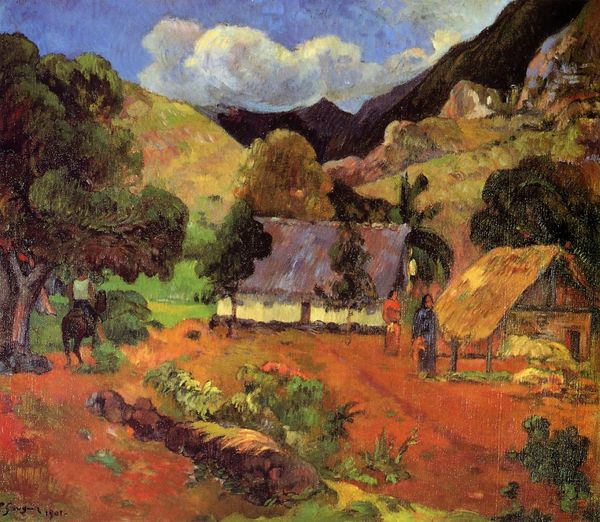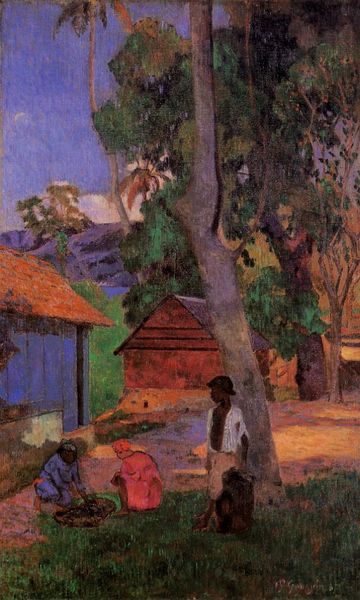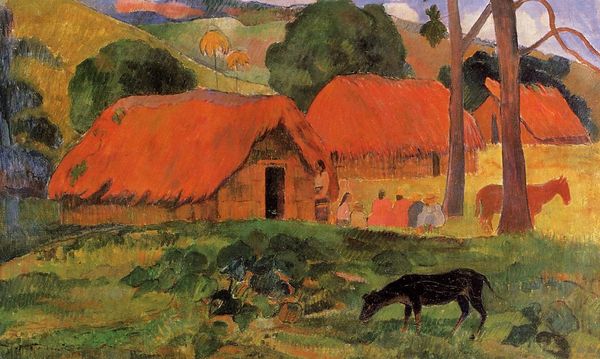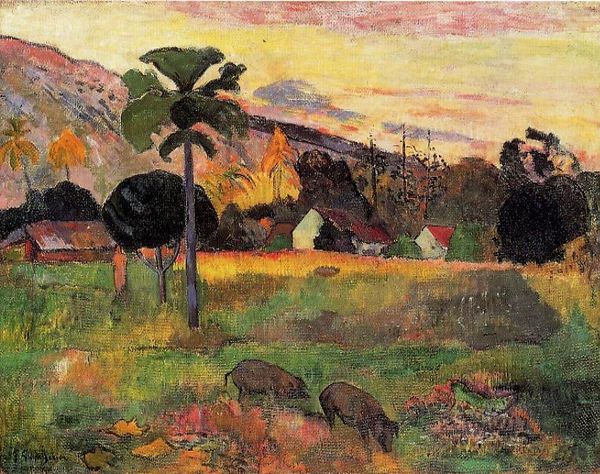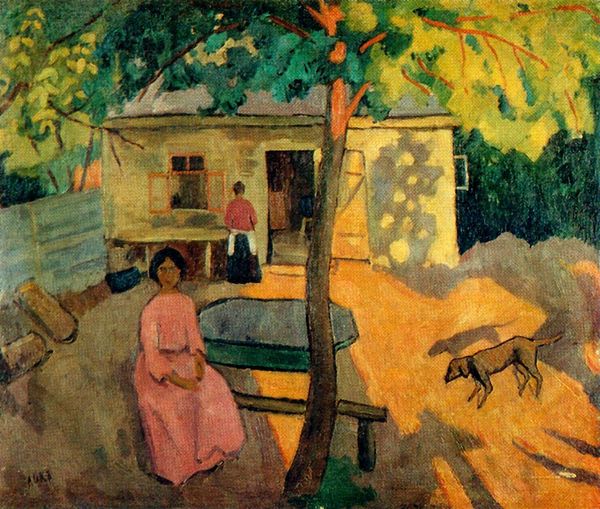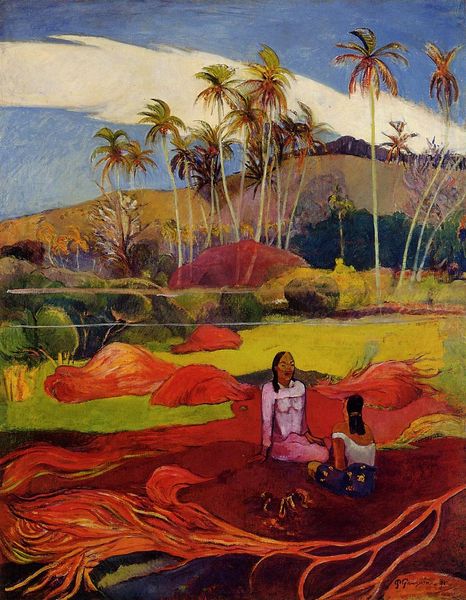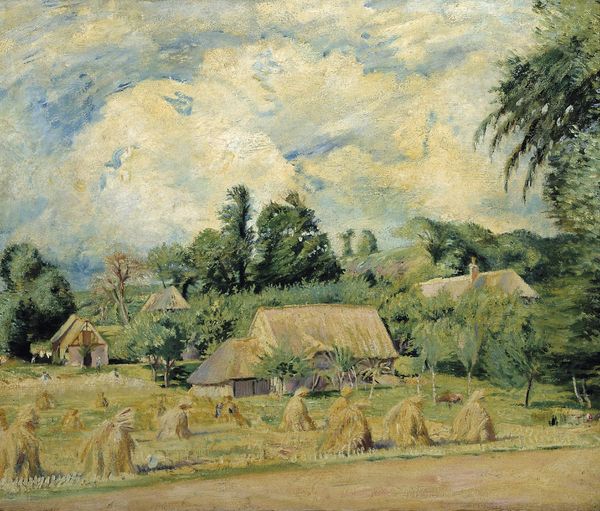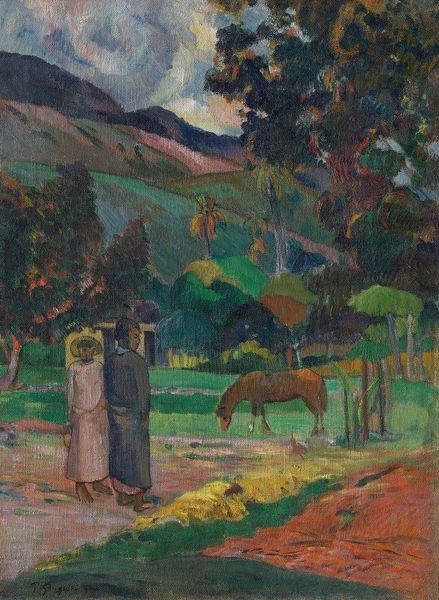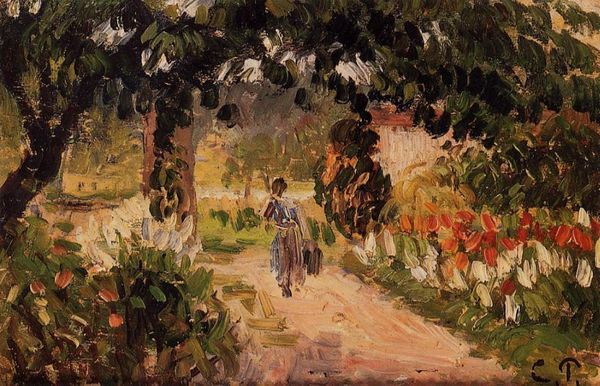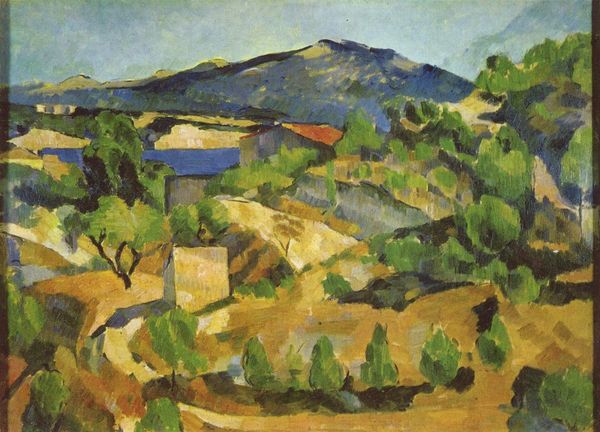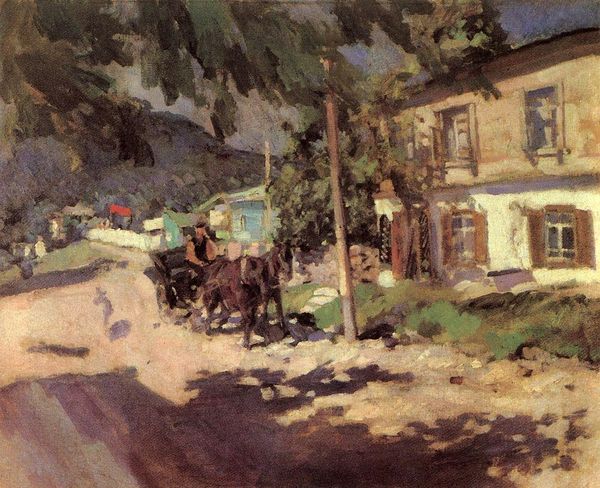
Copyright: Public domain
Paul Gauguin's "Road in Tahiti" captures a slice of Tahitian life through vibrant colors and simplified forms. The road itself, a pathway winding into the distance, is a potent symbol. Roads, as motifs, recur throughout art history; think of the Roman roads, symbols of power, or the Silk Road, arteries of cultural exchange. Gauguin’s road, though, leads us into a more personal, psychological space. It evokes a sense of journey, not just geographically, but also a journey into the self, or perhaps a retreat from the complexities of modern existence. Consider how often artists have used paths or roads to represent life's journey, a concept deeply rooted in our collective consciousness. The road in this painting invites us to wander, to explore, and perhaps to find a sense of belonging in the simple beauty of Tahiti. It speaks to a primal desire for connection with nature and a yearning for a life less burdened by the anxieties of modern society. This primal yearning is a powerful force that connects us to Gauguin's vision. The painting invites us to step onto that road, to reflect on our own journeys, and to find solace in the enduring beauty of the natural world.
Comments
No comments
Be the first to comment and join the conversation on the ultimate creative platform.
